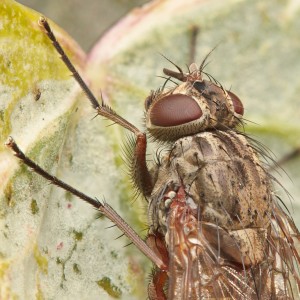What Are Cluster Flies?
November 8, 2012 by admin
Filed under Home Maintenance, Pest Control
What Are Cluster Flies?
Cluster flies are large, slow moving, hairy, flies around 10-15mm with a dark gray to black non-metallic abdomen. The larvae of the flies feed on earthworms in grass pasture or lawn areas. Then in autumn and early winter the adult flies will move into homes and other buildings to survive the winter.
They are named cluster flies because of their habit of congregating in large groups or swarms, often in dark places such as attics, corners of dark rooms, ‘nooks and crannies’ and ‘cracks and crevices’. Each fly releases a pheromone (smell) that attracts others. This pheromone will linger on, even after all the flies have been destroyed and removed. Thus the pheromone will continue to attract cluster flies to that area and clusters will keep recurring. It is therefore important that treatments are continued even when there are no flies present.
Why Are They a Pest?
The flies congregate to survive through the winter and once warmer weather arrives in spring they emerge from their ‘hibernation’ to lay eggs on surrounding grassland, pasture and lawns. So there tend to be two times of the year that these flies bother us in homes and other buildings; autumn when they congregate and spring when they emerge from their hiding places.
How To Stop Clusters
Kill the adults to prevent them laying eggs in surrounding grass. Kill the larvae in the grass to prevent the adults clustering in your buildings.
If you, or a neighbour, have had the problem in the past treat the likely areas of clustering in early autumn to prevent clusters forming. Spray with residual surface spay as described.
If you have the adult flies swarming and clustering in the house or other building you need to carry out a full program of treatment.
https://howto.yellow.co.nz/home-garden/pest-control-home-garden/how-to-stop-cluster-flies/
How do I get rid of cluster flies?
Control is best achieved by finding and treating cluster fly resting sites and harbourages by applying a residual cypermethrin-based insecticide to alighting surfaces and by activating permethrin foggers or smoke generators to fumigate the area and flush them out. If initial treatment is carried out in the autumn months, a follow-up treatment in the spring is often advisable.

